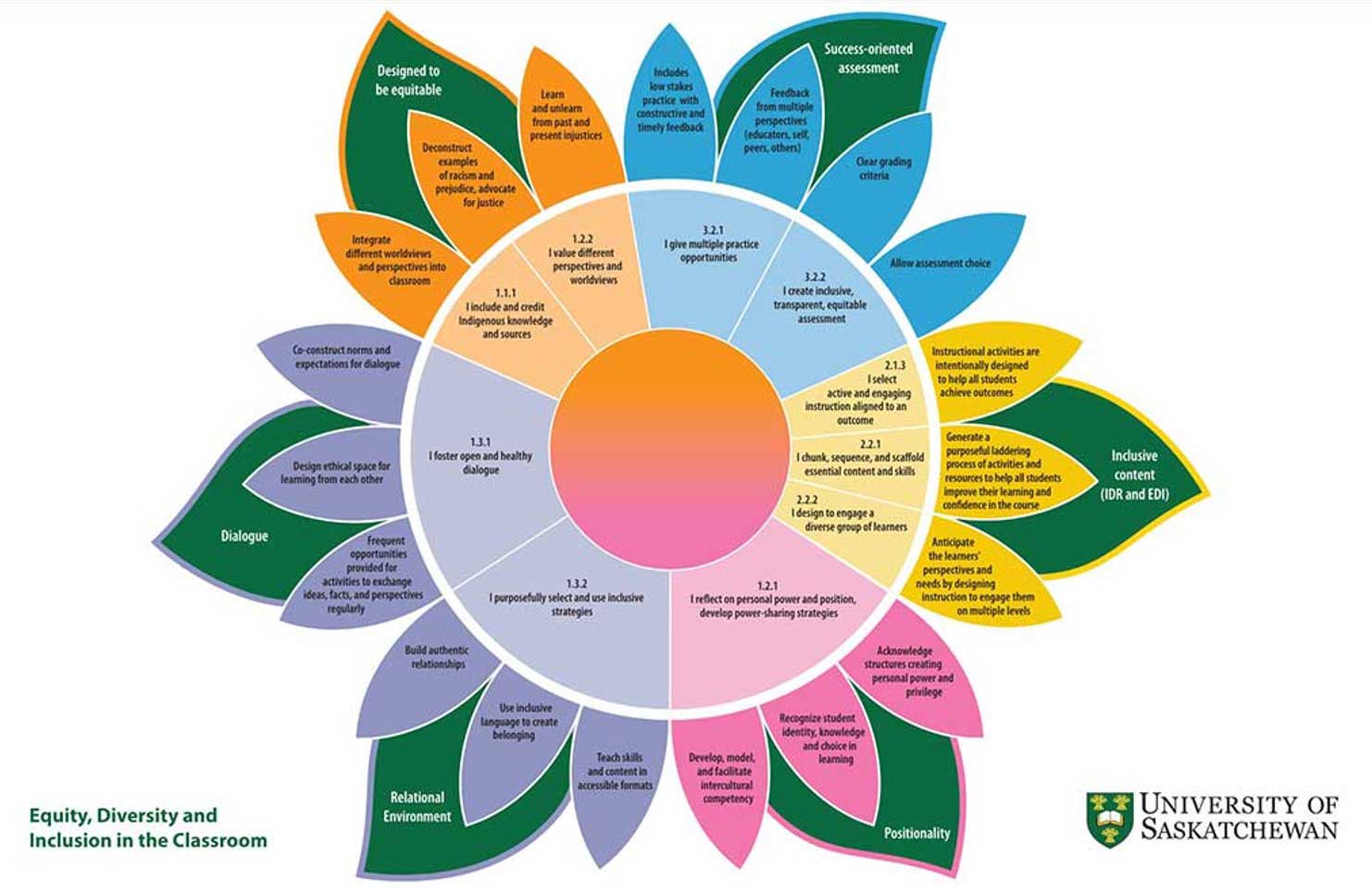Equity, Diversity, and Inclusion in the Classroom
Discover GMCTL’s EDI Flower, a resource to help you cultivate a learning environment where all students thrive. Explore essential competencies from positionality to assessment, designed to enhance your teaching and foster equity, diversity, and inclusion in your classroom.
By Gwenna Moss Centre for Teaching and LearningEducators today are at the forefront of fostering Equity, Diversity, and Inclusion (EDI) in the classroom. Promoting EDI in the classroom is a journey of continual learning and adaptation.
The Gwenna Moss Centre for Teaching and Learning (GMCTL) has created a resource designed to enrich educator’s understanding and application of EDI principles and provide strategies for incorporating EDI principles into instruction and assessment.
The inner petals of the EDI Flower represent the Certificate in University Teaching and Learning (CUTL) competencies. Surrounding them are the outer petals, embodying the foundational EDI principles and emphasizing respect for the diverse identities in classrooms. The leaves symbolize five broad knowledge areas essential for educators embarking on their EDI journey:
Positionality – Invites educators to consider their personal position in the classroom and the impact it has on educator-learner relationship. Consider power dynamics, hierarchical structure, learning choices, and intercultural competency with educator position.
Relational Environment – Reflection on purposeful use of inclusive strategies supports an environment of belonging and authentic relationship. Educators will also consider the use of language that builds relationship and is inclusive.
Dialogue – Language used by educators influences the impact on learning. Striving for an ethical space, respectful of diverse worldviews, provides an opportunity for the free exchange of ideas and perspectives. An educator-learner relationship founded in reciprocity, allows for co-construction of learning.
Designed to be Equitable – Inclusion and crediting Indigenous worldview by educators, models valuing different perspectives. Recognition of the dual history experienced by Indigenous and non-Indigenous people and sharing this history across curriculum from multiple perspectives, addresses racism and prejudice. The learning and unlearning that accompanies anti-racist/anti-oppressive education confronts contemporary injustices.
Success-oriented Assessment – Strength based assessment enriches learning based on timely, constructive, feedback and clearly communicated criteria. Learners can be part of the assessment cycle and will grow when engaging in self and peer assessment. The deeper understanding of the assessment process supports learners and increases transparency.
Inclusive Content (Indigenization, decolonization, and reconciliation and EDI) – Learner diversity presents opportunity for educators to employ a range of instructional strategies designed to meet learning needs. Clear outcomes are reached through instructional strategies like chunking, sequencing, and scaffolding. A holistic approach to learning will work to maintain balance and meet the needs of diverse learners.


